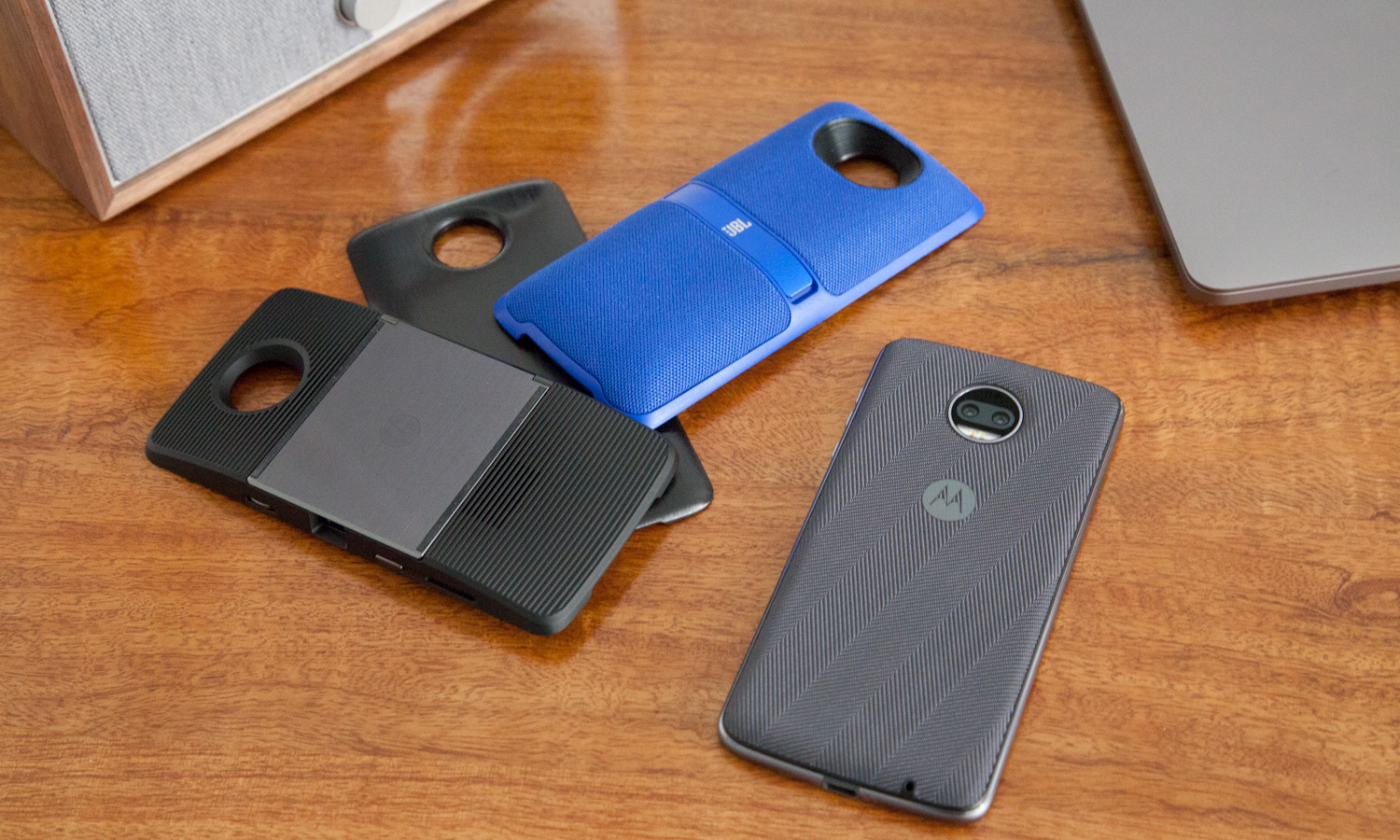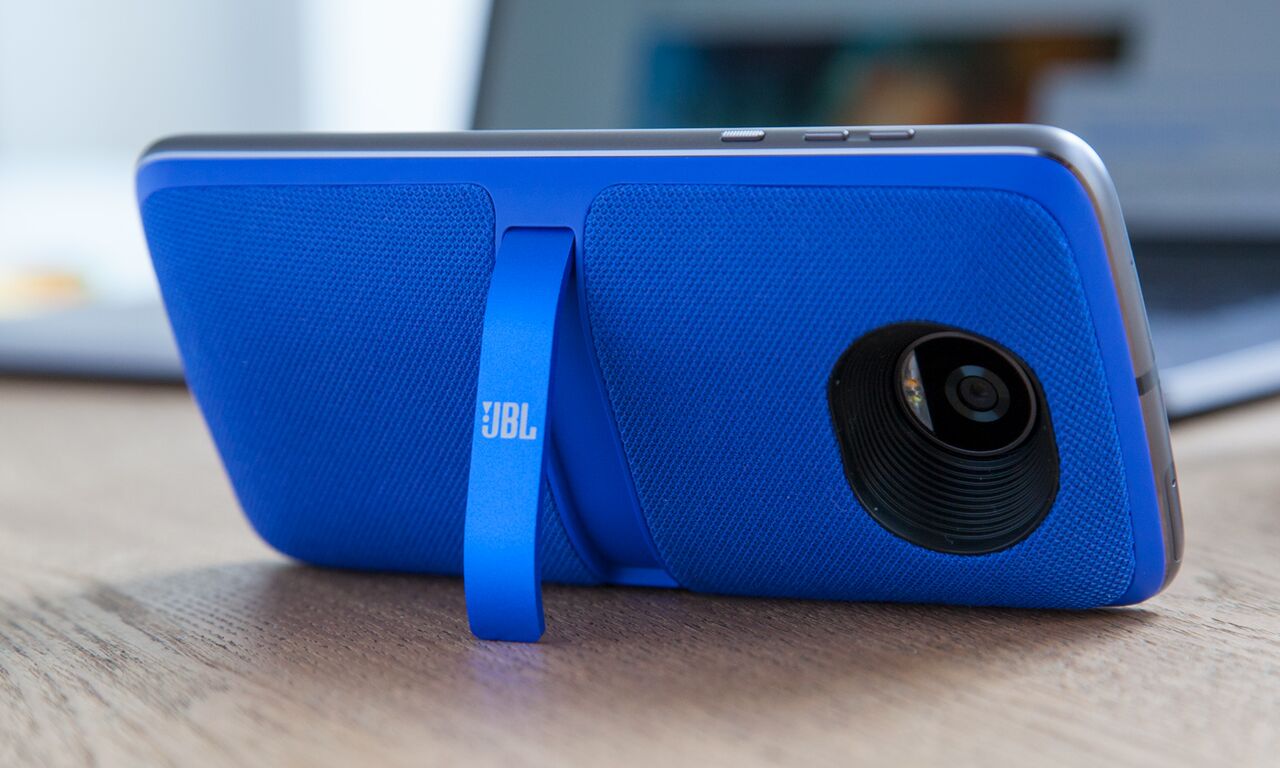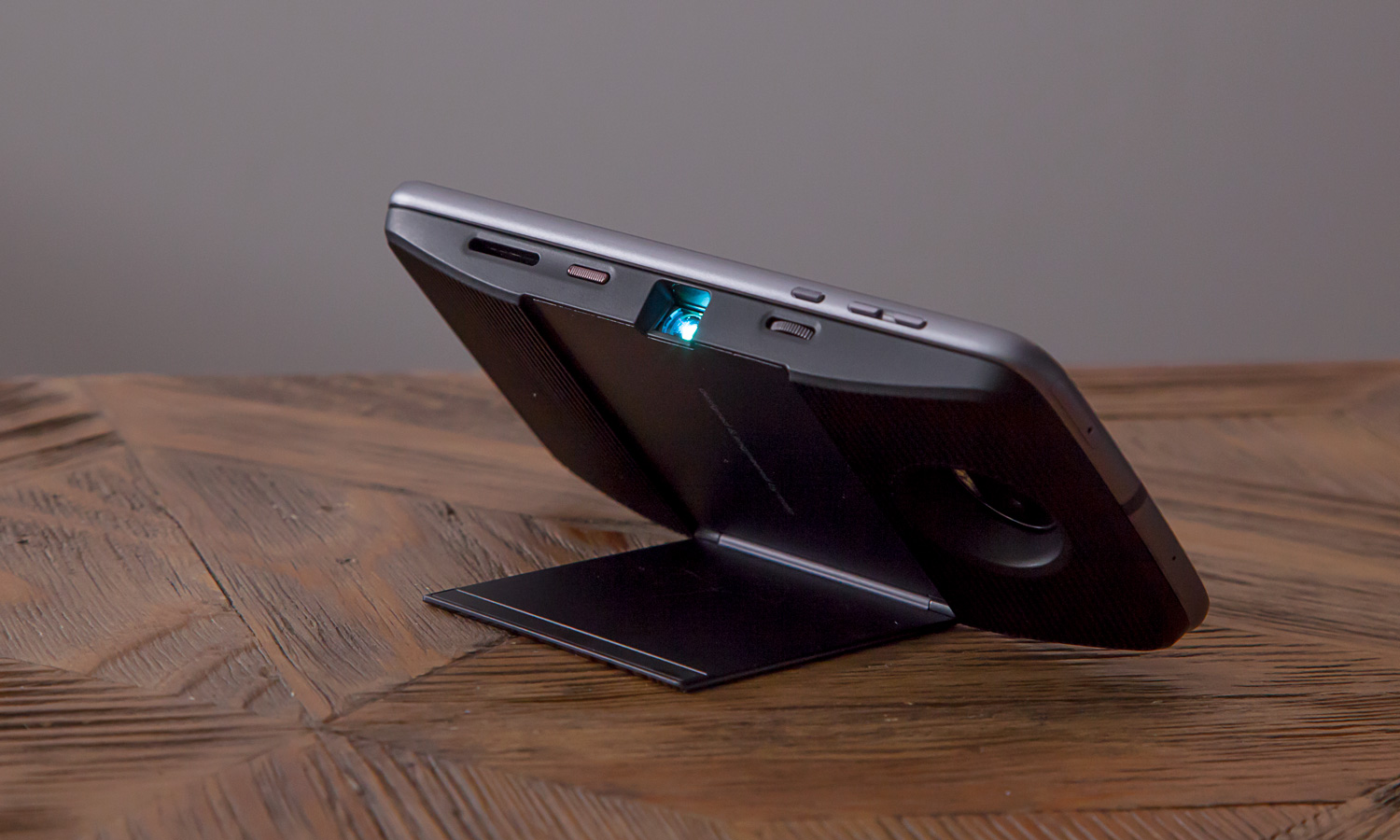I Dismissed Moto Mods … Until I Started Using Them
Being able to transform my phone with Moto Mods at the drop of a hat isn't just a party trick; it's a useful everyday feature.

I bought a Motorola Z2 Play phone a little less than a year ago, and soon after that, a Motorola ad caught my eye. This commercial, glimpsed between segments of a disappointing Agents of S.H.I.E.L.D. episode, contended that Moto Mods weren't just useful little gadgets you could snap onto your Moto Z phone; they were some of the first really "different" takes on the smartphone since the iPhone hit the streets back in 2007.
After using Moto Mods for almost a year, I have to admit that the commercial is mostly right.
While Moto Mods add a few small inconveniences — and a lot of extra expense — to what is already a thoroughly decent line of phones, I've also used my mods, again and again, almost every day since purchasing the Z2. Being able to transform my phone into a specialty device at the drop of a hat isn't just a party trick; it's a useful everyday feature. And no one is more surprised about that than I am.
The simple life
Before we go any further, I should explain something about myself: When it comes to tech, I'm about one step above a Luddite. I buy new devices kicking and screaming, at the behest of exasperated friends and family members, only when my old ones break beyond all reasonable hope of repair. (I have kept a 2010 Lenovo laptop running with parts I bought on eBay; like with the ship of Theseus, there's so little left of the original, I wonder if you can even call it the same computer.)
Unless I have a very clear idea of how a new piece of technology can benefit my everyday life, I don't want it. And when I do buy a new gadget, I want it to be a slightly fancier version of my old device, nothing more.
Of course, I have to upgrade my smartphone every few years, whether I like it or not. Old phones don't get vital security updates, and you generally can't swap out their batteries, which hold less and less of a charge over time. My last phone was the excellent Motorola Moto X, which I pretty much ran into the ground through constant use and general wear and tear.
I decided that Moto Mods were a novelty, a mostly superfluous addition to a phone line that was already good enough. It took me a few months to realize I was wrong.
I initially wasn't so keen on the Moto Z2 Play; after all, $400 (when I bought it) is an awful lot more than I'm used to paying for a phone. But USB-C charging is the way of the future, and the Z2 Play is both powerful and durable. I also bought my Z2 less than a month after it hit retail shelves, meaning I had (hopefully) two years of vital security updates ahead of me.
Sign up to get the BEST of Tom's Guide direct to your inbox.
Get instant access to breaking news, the hottest reviews, great deals and helpful tips.
One thing I wasn't so excited about with the Z2, though, were the Moto Mods. In case you're not familiar with them, Moto Mods are magnetic accessories that snap onto the back of any Moto Z phone. There are a whole bunch of them, ranging from battery packs to speakers to projectors and beyond.
MORE: Moto Mods Tested and Ranked Best to Worst
An extra battery pack sounded useful, of course, but I was pretty sure I'd never invest in any of the other Mods. After all, I already had a Bluetooth speaker; why did I need one directly attached to my phone? The phone's built-in camera is perfectly decent, even without an add-on that introduces an optical zoom. Games work just fine with the touch screen — who needs something like the Moto Gamepad? I decided that Moto Mods were a novelty, a mostly superfluous addition to a phone line that was already good enough.
It took me a few months to realize I was wrong.
Convenience versus versatility
So why complicate your smartphone with a bunch of expensive accessories?
In my experience, the reason to do this is that smartphones — even the best-of-the-best iPhone and Galaxy models — are still ultimately constrained by their hardware. You're never going to get a smartphone that can fill a house party with music or take crystal-clear photos while zoomed in or control a retro game as easily as a Game Boy could.

Moto Mods give smartphones a chance to transcend their jack-of-all-trades designs. I've plugged in my JBL speaker mod ($80) to listen to loud, nuanced music over the din of dishwashing or when I want to play a hot new song for my friends, impromptu.
I've taken the Hasselblad True Zoom camera mod ($200) with me to various conventions and snapped incredible shots of faraway speakers onstage — thanks to the 10X optical zoom — while other professionals walked away with grainy digital-zoom shots.
I've even toyed around with projecting huge videos onto white walls using the $200 projector mod, controlling classic games with a real thumb pad and buttons ($80), and making my phone last for weeks at a time, thanks to fast-charging, swappable battery packs like the TurboPower Pack ($80).

One experience that sold me on the whole endeavor happened only a week or so ago. The Tom's Guide crew moved into a new office a few months back, and I've been experimenting with a totally wireless desk setup — mouse, keyboard, headset, everything. Shouldn't I be able to charge my phone wirelessly, too?
The Moto Z line doesn't come with wireless charging built in. On any other phone, that would be the end of that. Except that there are two wireless charging Moto Mods, slim enough to fit in a pocket, but dead-simple to use. (One of them is even an extra battery pack, meaning there's theoretically no reason for my phone to ever go dead during the workweek again.)
I've plugged in my JBL speaker mod to listen to loud, nuanced music over the din of dishwashing or when I want to play a hot new song for my friends.
If there's a feature you want that your phone doesn't have, you can just snap on a mod. You don't have to wait two or three years to upgrade your whole system; you can do it piecemeal, like when you're buying new parts for a PC.
The drawbacks
Of course, just because I've found Moto Mods much more useful than anticipated doesn't mean they're without flaws. In fact, if I hadn't been able to try a lot of these mods at the office first, I wonder how many of them I'd have gotten to use at all.

A Moto Mod isn't as expensive as a new phone, but that doesn't mean they're cheap. Battery packs and speakers can run you between $50 and $80; the camera attachment costs a whopping $200. If you're going to deck out your Moto Z phone with every mod on the market, you might wonder if you'd just be better off buying a premium phone. (Short answer: Yes, you would.)
Not all mods are created equal, either. Battery packs are useful for anyone; speakers are useful for most people. Past that, it all gets a little niche. Do you really need an instant printer, or an Alexa speaker, or a 360-degree camera? Maybe, but they're a tough sell for the mass market, especially at more than $100 a pop.
In fact, Motorola seems to be doing away with a lot of its less mainstream mods, and the company hasn't made any comments about the future of third-party mods. Motorola hasn't specified exactly which mods are staying and which are going, but we'll probably see fewer mods in the coming years rather than more. This is too bad. Not everyone needs a game pad or an optical-zoom camera, to be sure, but I remember what a charming surprise the wireless charging mods turned out to be. I'd hate to think that, going forward, I won't have that same opportunity to find something I didn't know I needed.
MORE: Moto Now Owns the Budget Phone Market — And That's a Problem
On the bright side, Motorola's upcoming line of Z3 phones will retain Moto Mod compatibility, so the experiment has not run its course just yet. I'm sure we'll see more batteries and speakers. (There is, in fact, a new, cheaper Moto Mod speaker that just became available.) But I hope that Motorola won't abandon the unpredictable, novel nature of the mod project. Most manufacturers can make a smartphone that can do anything, at any time, decently well; it's rarer to find a smartphone that does just one thing at a time, very well.
Credit: Tom's Guide
Marshall Honorof is a senior editor for Tom's Guide, overseeing the site's coverage of gaming hardware and software. He comes from a science writing background, having studied paleomammalogy, biological anthropology, and the history of science and technology. After hours, you can find him practicing taekwondo or doing deep dives on classic sci-fi.

